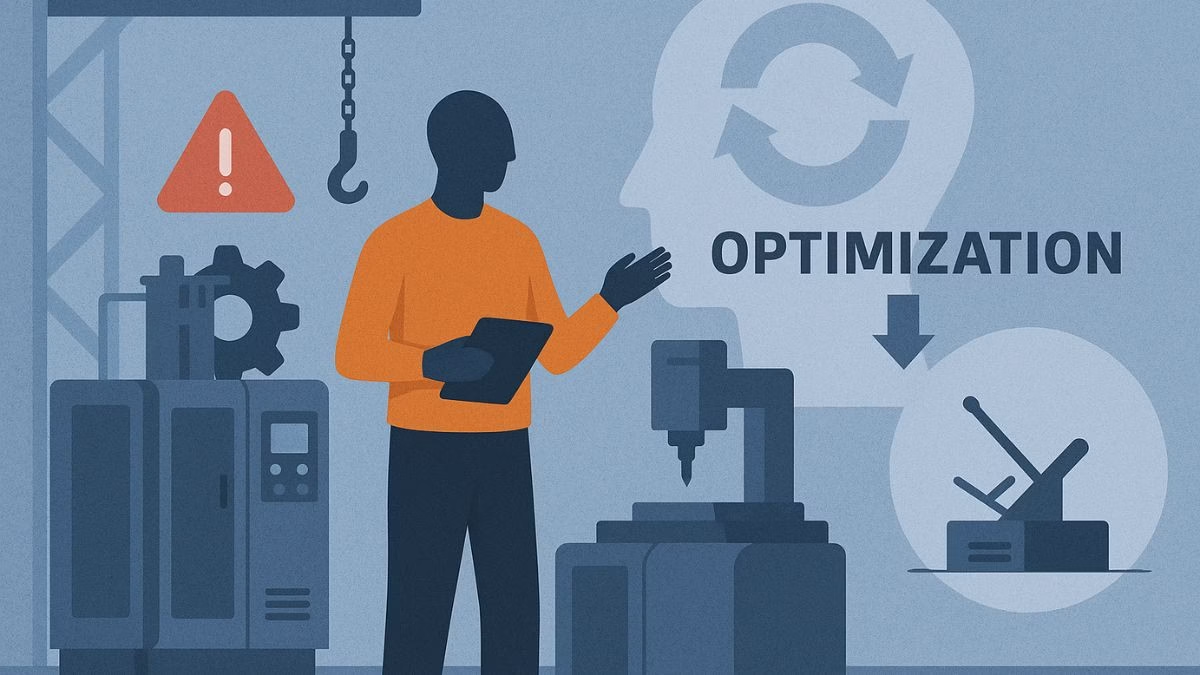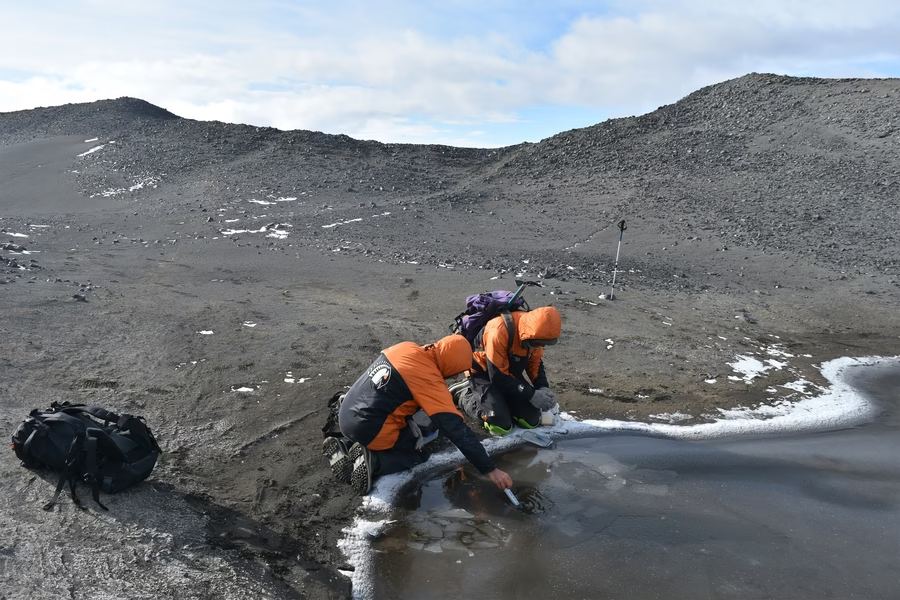The Sciences
Researchers develop AI algorithm to accurately detect heart murmurs in dogs
Researchers have developed AI Algorithm to detect heart murmurs in dogs, improving early diagnosis of cardiac disease

Researchers at the University of Cambridge have developed a machine learning algorithm capable of accurately detecting heart murmurs in dogs—a critical indicator of cardiac disease, particularly prevalent in smaller breeds like the King Charles Spaniel. This innovative approach has the potential to transform veterinary care, offering an accessible tool for early diagnosis and treatment of heart conditions.
Heart murmurs are a key sign of mitral valve disease, the most common heart issue affecting adult dogs. Statistically, approximately one in every 30 dogs seen by a veterinarian presents with a heart murmur, with higher rates observed in small breeds and older dogs. Given the frequency of such conditions, timely detection is essential. Early intervention can significantly enhance a dog’s quality of life and longevity, making effective screening methods vital for veterinarians.
Dr. Andrew McDonald, the study’s first author from the Department of Engineering at Cambridge, emphasized the importance of early detection, according to a statement issued by the University: “Heart disease in humans is a huge health issue, but in dogs it’s an even bigger problem. Most smaller dog breeds will have heart disease when they get older, but obviously dogs can’t communicate in the same way that humans can, so it’s up to primary care vets to detect heart disease early enough so it can be treated.”
The Algorithm’s Development
The research team began with an algorithm initially designed for human heart sound analysis. Recognizing the similarities between mammalian heart function, they adapted this technology to analyze audio recordings from digital stethoscopes used on dogs. The algorithm demonstrated an impressive sensitivity of 90% in detecting heart murmurs, a level of accuracy comparable to that of expert cardiologists.
Professor Anurag Agarwal, the lead researcher and an expert in acoustics and bioengineering, noted the absence of a dedicated database for canine heart sounds. “As far as we’re aware, there are no existing databases of heart sounds in dogs, which is why we started out with a database of heart sounds in humans,” he explained in a statement issued by the University of Cambridge. “Mammalian hearts are fairly similar, and when things go wrong, they tend to go wrong in similar ways.”
The team refined the algorithm to not only detect but also grade heart murmurs
To build a robust dataset, the researchers collected heart sound data from nearly 800 dogs undergoing routine examinations at four veterinary specialist centers across the UK. Each dog received a thorough physical examination and an echocardiogram performed by a cardiologist, who graded any detected murmurs and identified underlying cardiac issues. This effort resulted in the largest dataset of dog heart sounds ever compiled.
Expanding the Dataset for Better Outcomes
Co-author Professor Jose Novo Matos, a small animal cardiology specialist, highlighted the need for diverse data to improve the algorithm’s effectiveness: “Mitral valve disease mainly affects smaller dogs, but to test and improve our algorithm, we wanted to get data from dogs of all shapes, sizes, and ages. The more data we have to train it, the more useful our algorithm will be, both for vets and for dog owners.”
The team refined the algorithm to not only detect but also grade heart murmurs, distinguishing between mild and advanced disease requiring further intervention. This innovation aims to empower general veterinarians, reducing the need for expensive specialized scans and consultations with cardiologists.
Promising Results and Future Implications
The algorithm’s performance was encouraging: it aligned with cardiologists’ assessments in over half of the cases, and in 90% of instances, it was within one grading unit of the cardiologist’s evaluation. Dr. McDonald pointed out the practical implications of these findings: “The grade of heart murmur is a useful differentiator for determining next steps and treatments, and we’ve automated that process.”
Novo Matos remarked on the transformative potential of this technology, seeing it as a supportive tool rather than a job threat. “So many people talk about AI as a threat to jobs, but for me, I see it as a tool that will make me a better cardiologist,” he said. With the veterinary profession facing time constraints and a shortage of specialists, this algorithm could streamline the process of identifying dogs that need urgent care.
A Path Forward for Veterinary Medicine
The researchers’ ultimate goal is to equip veterinarians with the means to make informed decisions regarding treatment, enhancing the quality of life for their canine patients. “Knowing when to medicate is so important, in order to give dogs the best quality of life possible for as long as possible,” said Agarwal.
Supported by organisations such as the Kennel Club Charitable Trust and the Medical Research Council, this research marks a significant step forward in the use of machine learning for veterinary applications. As technology continues to evolve, it holds the promise of not only advancing animal health but also improving the human-animal bond through better care and understanding.
The Sciences
How a Human-Inspired Algorithm Is Revolutionizing Machine Repair Models in the Wake of Global Disruptions
A new multi-server machining model from India integrates emergency scenarios and behavioral uncertainties to optimize industrial resilience post-pandemic.

In the aftermath of the COVID-19 pandemic, industries worldwide grappled with a shared vulnerability: sudden breakdowns and disrupted repair services. Now, a new research study by Indian mathematicians C.K. Anjali and Sreekanth Kolledath, from Amrita Vishwa Vidyapeetham, Kochi, Kerala, offers a scientifically robust answer.
Published in one of Elsevier‘s peer-reviewed journals, the study introduces an innovative multi-server machining queuing model that simulates emergency vacations — sudden, unplanned leaves of absence taken by maintenance staff due to crises such as pandemics or natural disasters.
This innovative approach also accounts for “reneging”, when malfunctioning units exit the system before being serviced, and integrates retention strategies to keep these units within the repair cycle — a nod to the real-world pressures and adaptations faced by modern industrial systems.
“The disruptions caused by the COVID-19 pandemic made it clear how critical unexpected breakdowns and service interruptions can be in industrial systems,” co-author Sreekanth Kolledath said to EdPublica. “This inspired us to model such emergency scenarios more realistically and explore efficient optimization strategies.”
The Power of teaching–learning-based optimization
What truly sets this study apart is its use of a relatively novel algorithm: Teaching–Learning-Based Optimization (TLBO) — a human-inspired metaheuristic. TLBO mimics the interactions in a classroom, where students improve by learning from both teachers and peers. This “educational” algorithm is benchmarked against more established methods like Particle Swarm Optimization (PSO) and Genetic Algorithms (GA).
The result? TLBO consistently outperformed its peers in optimizing the cost and efficiency of repair operations under complex conditions, showing robustness in handling dynamic workloads and service interruptions.
“This research helps bridge a gap in queuing theory by not only modelling realistic industrial disruptions but also applying an underused yet highly effective optimization technique,” explained lead researcher C.K. Anjali.
Modelling real-life Complexities
The model simulates environments like CNC machining systems where multiple machines (K), standbys (S), and repairmen (R) operate under fluctuating conditions. Emergency vacations are modelled using probability distributions, while the likelihood of units leaving (reneging) and being retained is factored into performance and cost metrics.

Using matrix-analytic methods, the researchers assessed system behaviour across parameters like waiting times, failure rates, and repair loads. Their simulations revealed:
- Increased emergency vacations lead to higher wait times and unit failures.
- Faster server startup (post-vacation) mitigates congestion.
- Higher reneging probability severely affects system throughput — but retention mechanisms help stabilize it.
- TLBO yielded the lowest total operational cost among the three algorithms across all test cases.
A blueprint for resilient manufacturing
Beyond academic impact, the implications of this research are practical and global. Industries like aerospace, healthcare, and smart manufacturing—where machine uptime is crucial—can integrate this model to simulate and prepare for emergency disruptions.
Moreover, by applying TLBO, organizations can fine-tune costs related to machine downtime, labour availability, and service logistics, helping build resilience in supply chains and production floors.
What’s next?
The researchers suggest future work could extend the model to cloud-based repair simulations, energy-aware systems, and AI-integrated predictive maintenance, further aligning with the Industry 5.0 vision.
“This research was made possible only due to the constant encouragement and support of Dr. U. Krishnakumar, our visionary Director at the Kochi Campus in Kerala, India,” adds Kolledath. “He is widely known for fostering a culture of quality research within the institution.”
As the world continues to adapt to increasingly unpredictable events, the fusion of human-inspired algorithms with real-world engineering models might just be the lesson industries need most.
Health
Teak Leaf Extract Emerges as Eco-Friendly Shield Against Harmful Laser Rays
Raman Research Institute scientists unlock sustainable alternative for laser safety in line with green tech goals

In a significant step toward sustainable photonic technologies, scientists from the Raman Research Institute (RRI), an autonomous institute under the Department of Science and Technology (DST), Government of India, have discovered that teak leaf extract can serve as an effective, natural shield against harmful laser radiation. This breakthrough offers new potential for protecting both sensitive optical sensors and human eyes from high-intensity lasers used in medical, industrial, and defense applications.
The team has found that the otherwise discarded leaves of the teak tree (Tectona grandis L.f) are rich in anthocyanins, natural pigments responsible for their reddish-brown colour. When exposed to light, these pigments exhibit nonlinear optical (NLO) properties, allowing them to absorb intense laser beams—a key feature required for laser safety gear.
The discovery, recently published in the Journal of Photochemistry and Photobiology A: Chemistry, proposes a non-toxic, biodegradable, and cost-effective alternative to conventional synthetic materials like graphene and metal nanoparticles, which are often expensive and environmentally hazardous.
“Teak leaves are a rich source of natural pigments such as anthocyanin… We explored the potential of teak leaf extract as an eco-friendly alternative to synthetic dyes in the field of nonlinear optics,” said Beryl C, DST Women Scientist at RRI, in a media statement issued by the government.
To extract this natural dye, researchers dried and powdered teak leaves, soaked them in solvents, and processed the mixture using ultrasonication and centrifugation. The resulting reddish-brown liquid was then tested with green laser beams under continuous and pulsed conditions.
Using advanced techniques like Z-scan and Spatial Self-Phase Modulation (SSPM), the dye demonstrated reverse saturable absorption (RSA)—a rare and desirable trait where the material absorbs more light as the intensity increases, effectively acting as a self-regulating shield against laser exposure.
This development is particularly crucial as laser technologies become increasingly prevalent in everyday environments—from surgical devices and industrial cutters to military-grade systems. By offering a natural and renewable solution to a global safety challenge, the RRI team has opened the door to a future of eco-conscious optical safety equipment, such as laser-resistant eyewear, coatings, and sensor shields.
Researchers also indicated that further studies will focus on enhancing the stability and commercial usability of the dye for long-term deployment.
This innovation aligns with the principles of Industry 5.0, emphasizing human-centered and environmentally responsible technology, and showcases how indigenous, sustainable resources can play a pivotal role in global tech solutions.
Earth
Meltwater ponds might have sheltered life during earth’s deep freeze
During this time, the planet was believed to be encased in ice, with global temperatures plummeting to as low as -50°C

In a study published in Nature Communications, scientists from MIT have proposed that shallow meltwater ponds may have provided critical refuges for early complex life during one of Earth’s most extreme ice ages — the “Snowball Earth” period, which occurred between 635 and 720 million years ago.
During this time, the planet was believed to be encased in ice, with global temperatures plummeting to as low as -50°C. Despite the harsh conditions, complex cellular life — known as eukaryotes — managed to survive. The new research suggests that these life forms could have found sanctuary in small, briny pools formed on the surface of equatorial ice sheets.
“Meltwater ponds are valid candidates for where early eukaryotes could have sheltered during these planet-wide glaciation events,” said lead author Fatima Husain, a graduate researcher in MIT’s Department of Earth, Atmospheric and Planetary Sciences, in a media statement. “This shows us that diversity is present and possible in these sorts of settings. It’s really a story of life’s resilience.”
The team drew parallels between ancient equatorial ice sheets and modern Antarctic conditions. They studied contemporary meltwater ponds on Antarctica’s McMurdo Ice Shelf — an area first dubbed “dirty ice” by explorers in the early 20th century. These ponds, formed by sun-warmed dark debris trapped within surface ice, provided a modern analog to the possible melt environments of the Cryogenian Period.
Samples taken from these Antarctic ponds revealed clear signatures of eukaryotic life. Using chemical and genetic analysis, including the identification of sterols and ribosomal RNA, the researchers detected algae, protists, and microscopic animals — all descendants of early eukaryotes. Each pond supported unique communities, with differences shaped largely by salinity levels.
“No two ponds were alike,” Husain noted. “There are repeating casts of characters, but they’re present in different abundances. We found diverse assemblages of eukaryotes from all the major groups in all the ponds studied.”
These findings suggest that meltwater ponds — overlooked in previous hypotheses — could have served as vital “above-ice oases” for survival and even diversification during Snowball Earth.
“There are many hypotheses for where life could have survived and sheltered during the Cryogenian, but we don’t have excellent analogs for all of them,” Husain explained. “Above-ice meltwater ponds occur on Earth today and are accessible, giving us the opportunity to really focus in on the eukaryotes which live in these environments.”
The study was co-authored by MIT’s Roger Summons, Thomas Evans (formerly MIT), Jasmin Millar of Cardiff University, Anne Jungblut of the Natural History Museum in London, and Ian Hawes of the University of Waikato in New Zealand.
By uncovering how life may have persisted through Earth’s frozen past, the research not only deepens understanding of our planet’s history — it may also help inform the search for life on icy worlds beyond Earth.
-

 Society4 months ago
Society4 months agoStarliner crew challenge rhetoric, says they were never “stranded”
-

 Space & Physics3 months ago
Space & Physics3 months agoCould dark energy be a trick played by time?
-

 Earth4 months ago
Earth4 months agoHow IIT Kanpur is Paving the Way for a Solar-Powered Future in India’s Energy Transition
-

 Space & Physics3 months ago
Space & Physics3 months agoSunita Williams aged less in space due to time dilation
-

 Learning & Teaching4 months ago
Learning & Teaching4 months agoCanine Cognitive Abilities: Memory, Intelligence, and Human Interaction
-

 Earth2 months ago
Earth2 months ago122 Forests, 3.2 Million Trees: How One Man Built the World’s Largest Miyawaki Forest
-

 Women In Science3 months ago
Women In Science3 months agoNeena Gupta: Shaping the Future of Algebraic Geometry
-

 Society5 months ago
Society5 months agoSustainable Farming: The Microgreens Model from Kerala, South India
























